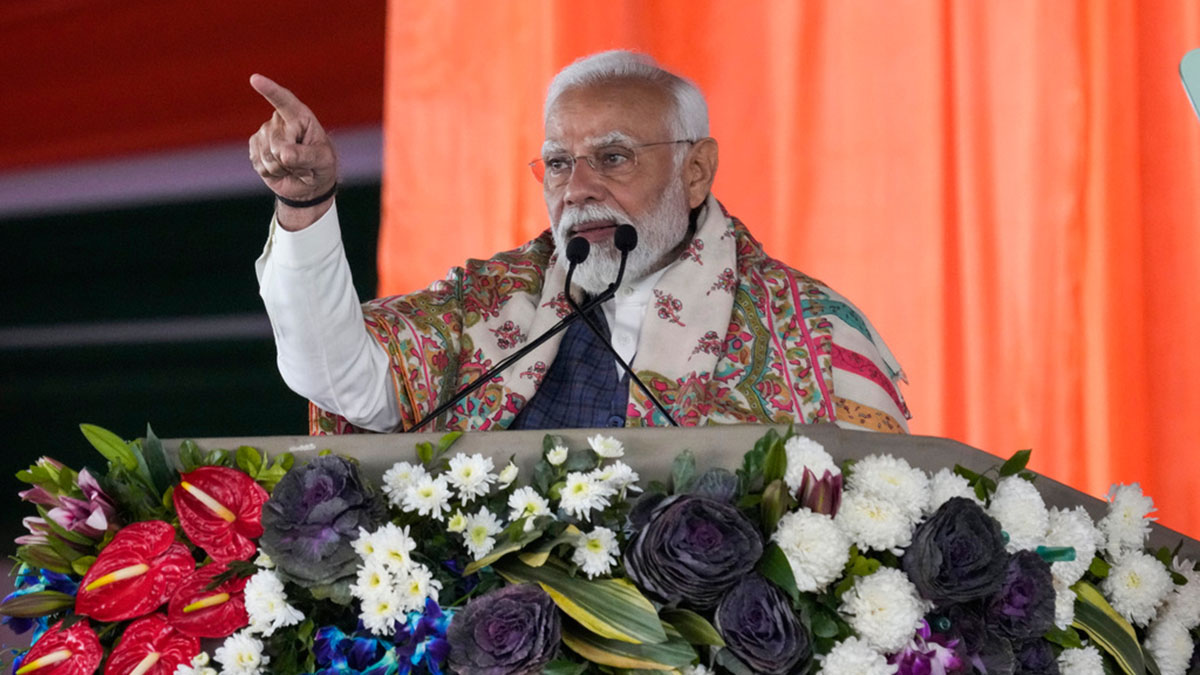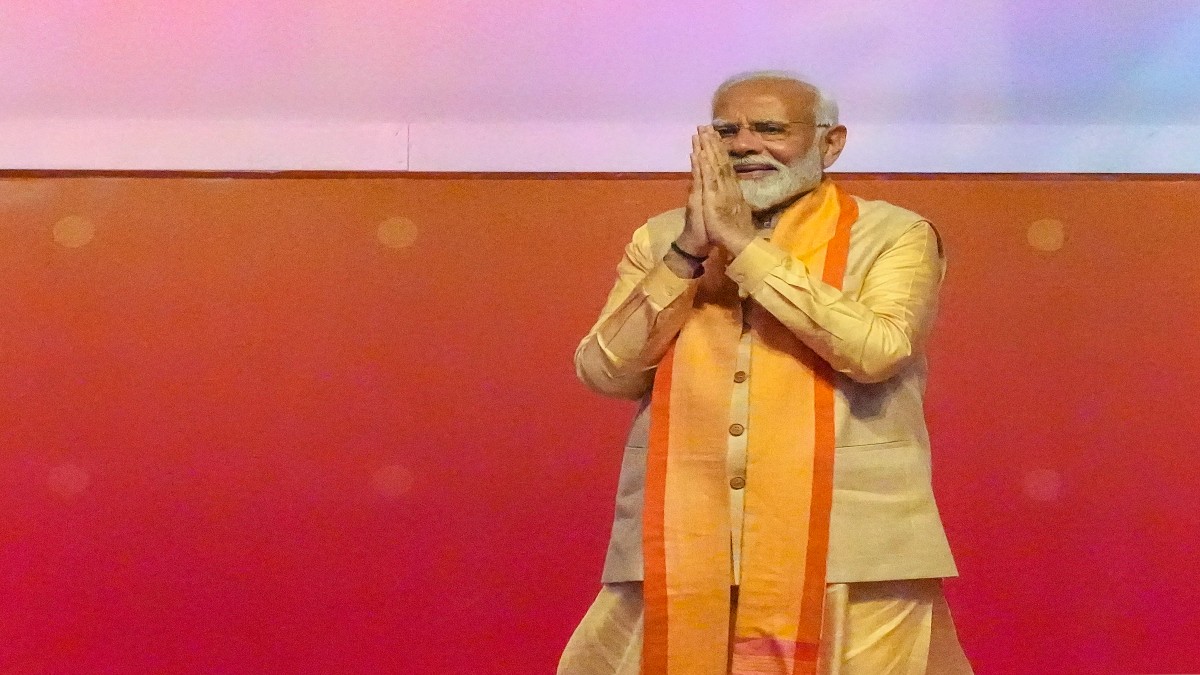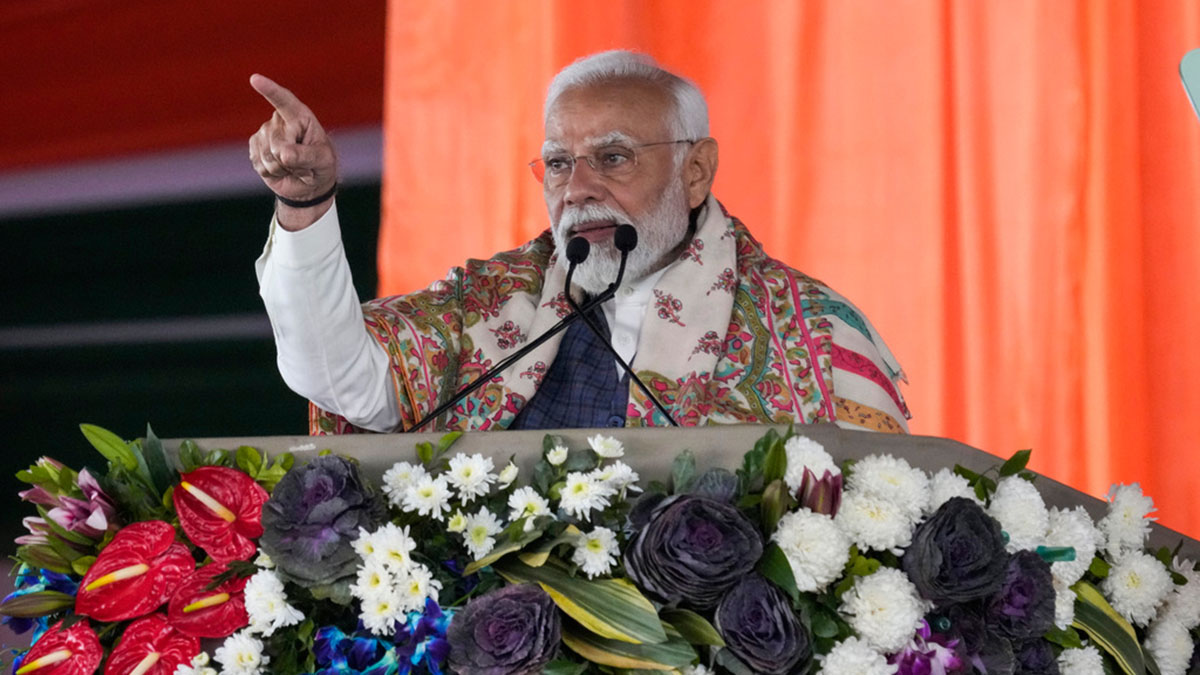The place is Rajasthan’s Shekhawati, and the time is the 1940s and ’50s. The fall of the British empire and the rise of a new, independent India is imminent, almost palpable. The freedom movement has witnessed the rise and fall of several political leaders, and different brands of politics — non-cooperation, radicalism and non-violence. Artists in Rajasthan are not immune to the tension brewing in their region and the rest of the country. Marwari families, who are supporters of the Indian independence movement, become their patrons. The result is the creation of collages of a political nature, which capture the mood of the era.
Mahatma Gandhi, Jawaharlal Nehru, Vallabhbhai Patel and Subhas Chandra Bose are the subjects of these collages, but their depiction is far from simplistic. Take for example Gandhi, who is shown thinking, distanced from Nehru and even brutally injured and bleeding. These political figures stand alongside (quite literally) figures from Hindu mythology. The collages were displayed in Rajasthan’s havelis and are now part of an exhibition titled ‘What Freedom Looks Like’. It is a study of the predominant ideology of the time: of the anxieties of a newly-formed nation, and the assertion of self-rule after a century of being colonised, and the need for nation building.
The curator of this exhibition, Aditya Ruia, learnt about these collages (which classify as broadsides) when culture historian Dr Jyotindra Jain spoke about them in a public lecture. “Since my family hails from Shekhawati, I got quite interested in knowing more about them. During my trips there, I attempted to see them in situ. I was successful in seeing them in the gents sitting areas in some of the havelis,” he says.
Not much is known about the people who wanted these collages to be created. But Ruia says that one can imagine the ancestor of a current owner buying such artworks and keeping them in their homes as a mark of respect to the political leaders of the time. “We know historically that a number of Marwari businessmen were involved in the freedom movement. GD Birla and Jamnalal Bajaj are the most famous examples,” he explains.
On the other hand, the identity of the artists who put these broadsides together is well known. The backgrounds were painted by women in Rajasthan’s Nathdwara town, and the cut-outs are from North Indian calendars and prints that were in general circulation. “Some of the original paintings for the prints were painted by famous artists in Nathdwara, such as Narottam Narayan Sharma,” Ruia explains. He says that the collage artists were aware of the connotations and metaphors in these artworks. They drew from their own understanding of the political atmosphere and provided interpretations. “They were extremely aware of the comment they were making on the current topics of the time. It is also evident that they were pushing an agenda for independence and nation building,” he adds.
Notably, these collages weren’t meant purely for personal display; they were placed in the havelis such that outsiders could view them, so they can be considered public art. The implication is that Rajasthani society’s brand of politics was influenced by the views of those who commissioned/created these art works. “This placement in the more accessible parts of the haveli becomes important, because it allows for a larger number of people to access it and therefore plays the role of informing people in smaller towns about the overall public discourse. Christopher Pinney has even suggested that calendars were the early form of public propaganda,” says Ruia.
There is a significantly large presence of symbols associated with Hinduism and Hindu culture, such as the Bhagawad Gita and the conceptualisation of the nation as ‘Bharat Mata’. One gets the sense that these broadsides portrayed an idea of nationhood that was more inclined towards one religion than a secular understanding. Ruia offers an explanation for this symbolism. “Indic thought is quite conversant with multiple goddesses, and therefore, relating to the country as a mother who nutures her children is easy to accept by the popular consciousness,” he says. In these collages, ‘Bharat Mata’ emerges as a new, unorthodox goddess in the shanta bhava, he says_._ The metaphor of the ‘Ram Rajya’, promoted by Bal Gangadhar Tilak as a conceptualisation of self-rule, also features in these artworks.
One of the unique features of these artworks is their form: The placement of the cut-outs and the background settings (urban houses and rural landscapes) depicted in the paintings are both integral to understand the meaning of each collage. Ruia says that the concept of adding a background is not unknown. “Sanjhi as an art form was quite popular in the temple decorations in Rajasthan. We also have collages that were brought into Shekhawati earlier by haveli owners most likely from Kolkata, as they have prints from Bengal embedded in them. It also lends an air of the novel (adbhuta) to the place where these collages must have been displayed.”
Despite their clear political messaging, these collages had a limited circulation and weren’t a pan-Indian artistic phenomenon, Ruia says. “Unless the understanding of the haveli owner and the artist coincided, the owner would not acquire the collage/broadside. This understanding of political events would, in that case, have an element of the regional, very much like a regional interpretation of food or even literature. This is what gives it a regional flavour,” he says.
What Freedom Looks Like is on display at Mumbai’s Chatterjee and Lal gallery till 18 August


)




)
)
)
)
)
)
)
)